Learn everything you need to know to teach your students about how to make a podcast project with Soundtrap, from couch to publication!
Podcasting Lesson Plan
Let’s jump right in and take a look at the podcasting lesson plan.
On the slide you’ll notice that I’ve included all major objectives of this project.
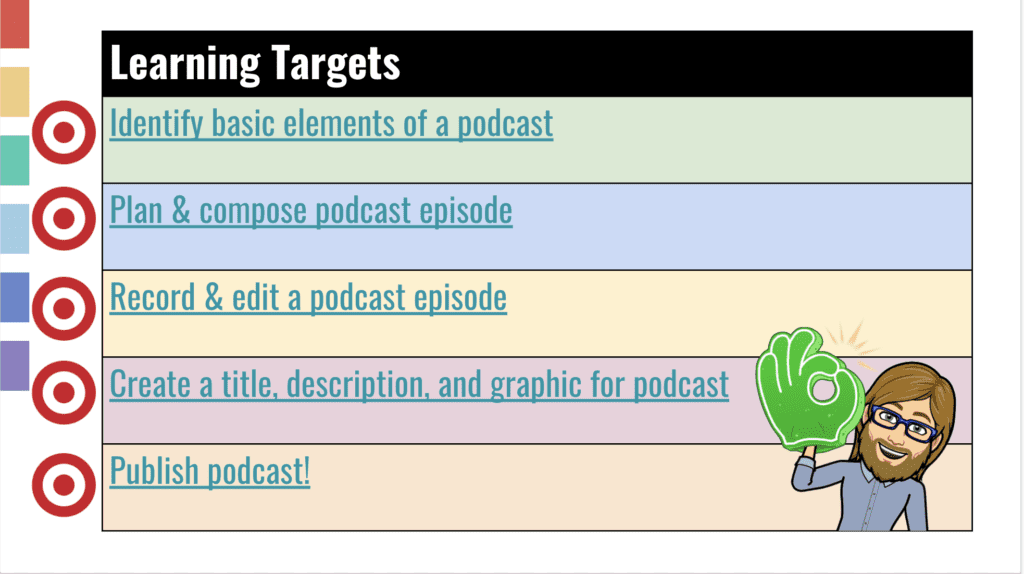
For this particular lesson plan, I’ve chosen to create a podcasting topic (essential question) around the essential question of how Covid-19 has impacted our students, their families, and their community.
You could of course also allow students to choose the topic themselves.
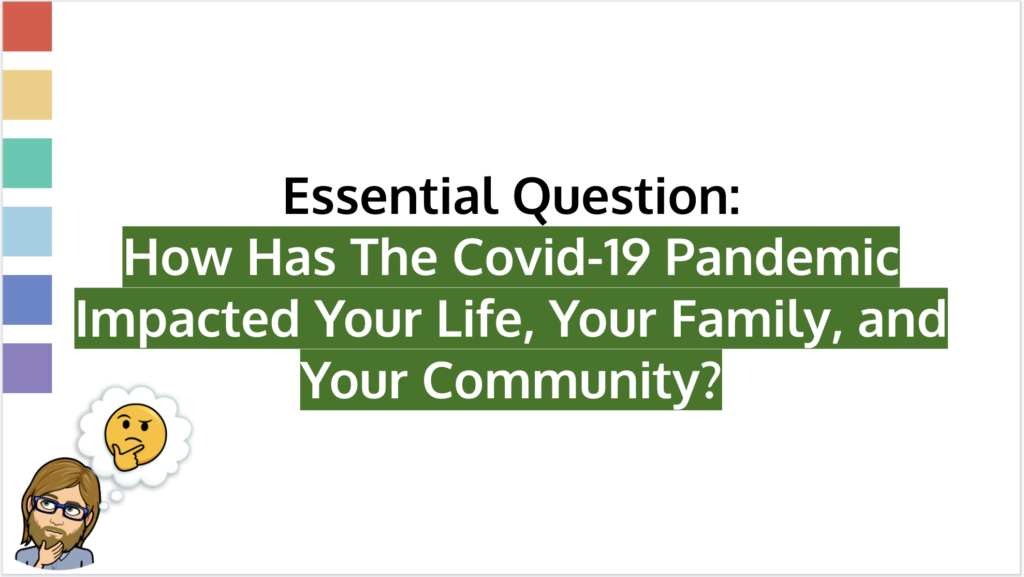
To begin, students will engage their prior knowledge and write directly on this slide what they already know about a podcast.
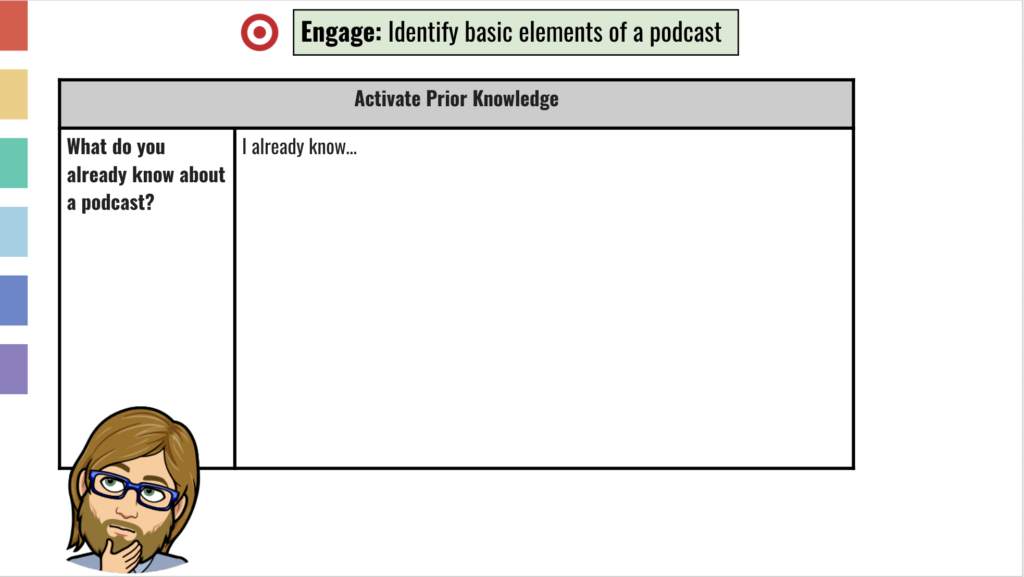
Then, students will explore different podcasts in order to identify what they noticed about the different elements of a podcast.
Here, I’ve included a hyperlink to NPR’s website, which has some great examples of podcasts that students could listen to to get a sense of what podcasting is all about. After they listen to a couple snippets of podcasts, they’ll write in their own words how they would describe a podcast.
Next, students are going to watch Story Corps videos in order to get a little bit better understanding of what telling a more intimate portrayal or perspective about one’s life would look like.
There’s also a link to a KQED podcast featuring high-school students talking about their experience living through the Covid-19 pandemic. Having students listen to this podcast, or another podcast closely related to their topics, will give them an even better sense of what they would be recording themselves when they complete this assignment.
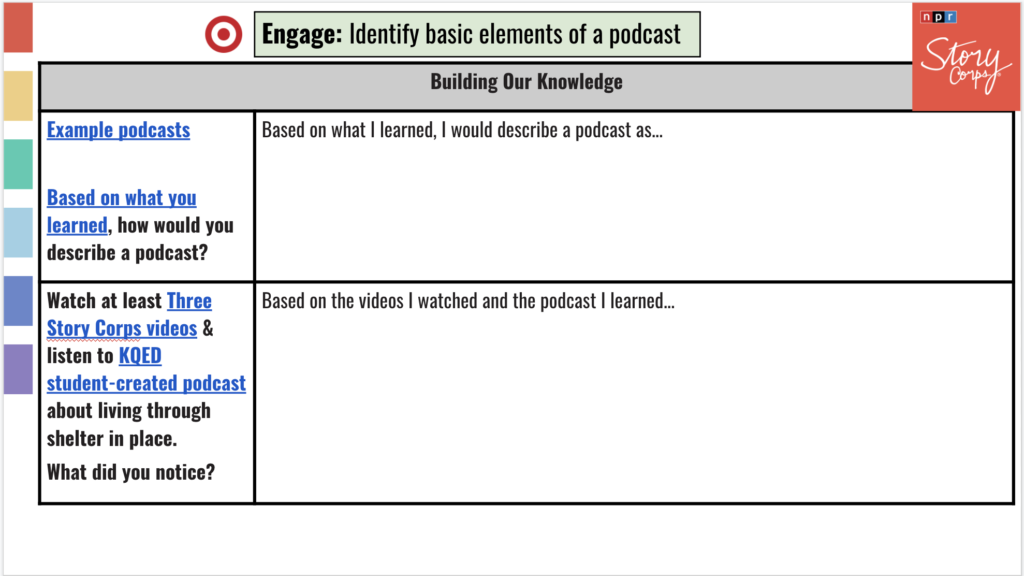
The Explore phase continues on the next Slide. You’ll notice under topic that I already pre-wrote the topic that my students are going to do. At this point it’s totally up to you whether you keep that topic, whether you want to make it more open-ended for your students to choose, or whether or not you want to assign them a totally different topic. Then, students will first record what they already know about that topic.
If relevant, students can research on Google to go learn more information about the topic that they’re going to be creating a podcast episode about.
Then, they’ll work on writing a specific focused question that’s going to be the centerpiece of their podcast. Again, here you’ll see in the example below that I’ve pre-written the focus question for my students, however you could also have them develop their own.
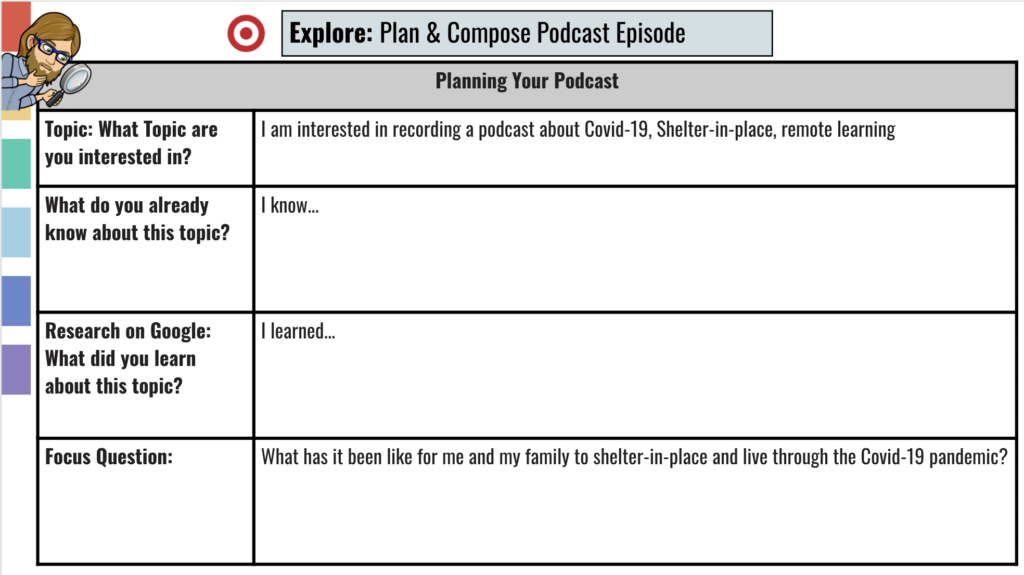
For the Explain step, ‘Planning and Composing a Podcast Episode,’ I’ve adapted some ideas from KQED’s guide composing a perspective. Note in the example below that I completed my own as an example to show students.
Once students complete their drafts, this would also be a good time to jump in and provide students with feedback prior to recording.
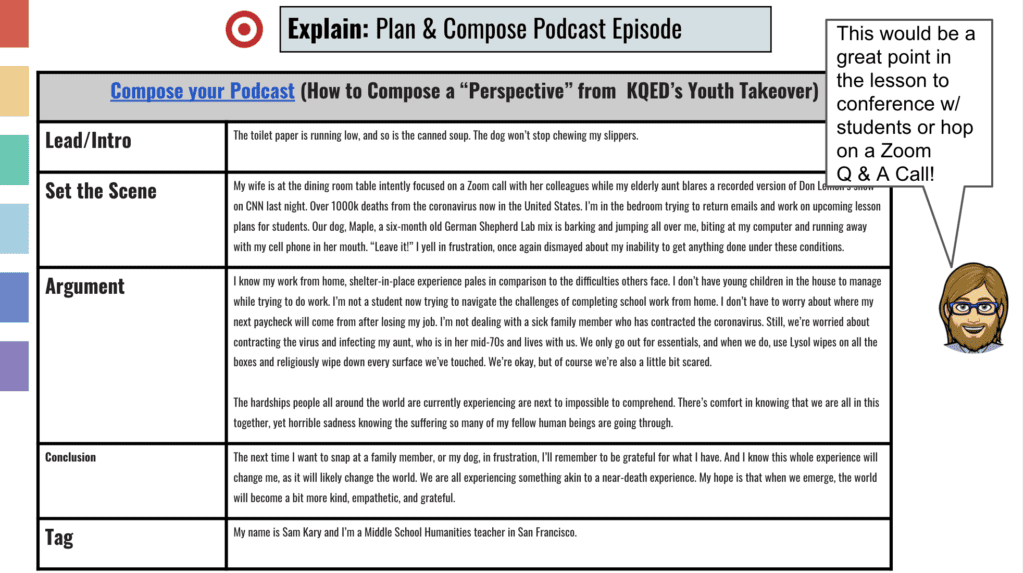
The last part of the planning phase will have students think intentionally about how to get the best quality audio recording. Included is a link to Thom Gibson’s video about optimizing audio recording on a smartphone.
If students are not using a smartphone but instead are using a computer to record audio, it’s just important that they are in as quiet a room as possible and that they speak relatively closely to the microphone on their computer.
Since the actual podcast recording is essentially a type of performance, it’s a good idea to have students think about when and where they’re going to record their podcast episode.
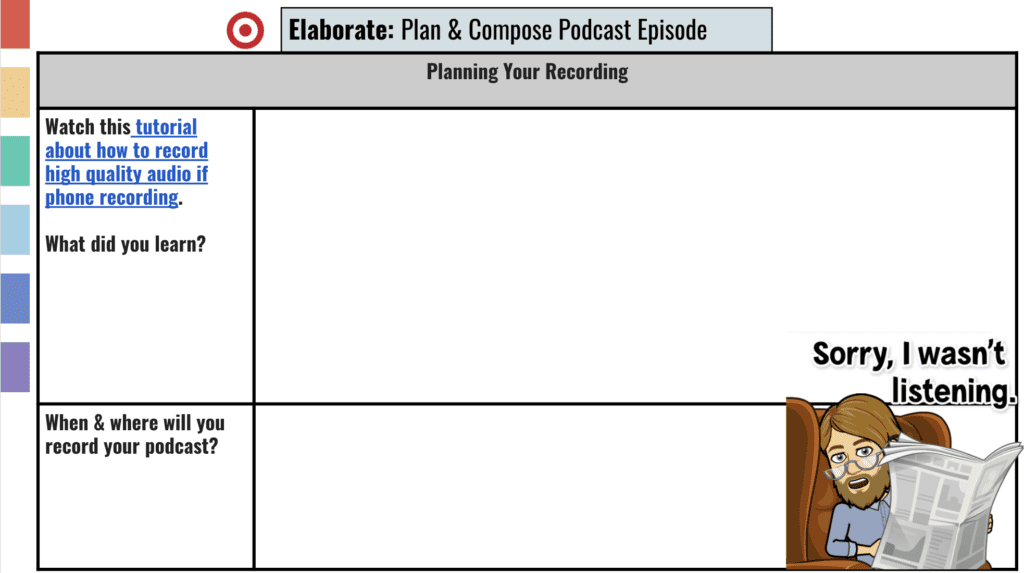
Next, students will learn the basics of how to record and edit a podcast episode using Soundtrap.

Recording & Editing Podcasts in Soundtrap
Now let’s look at how students can record and edit their podcasts using Soundtrap.
After logging into Soundtrap, students will enter the studio.
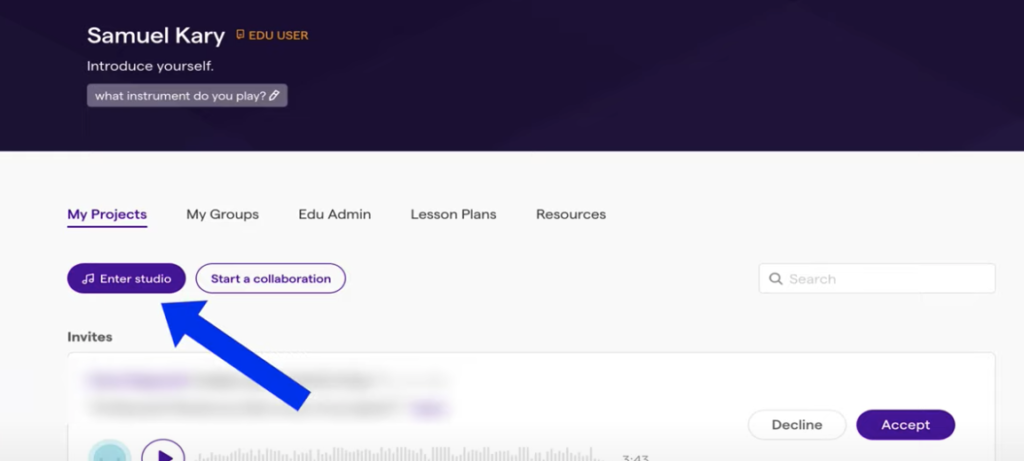
Once inside, students will have the option to record a podcast.
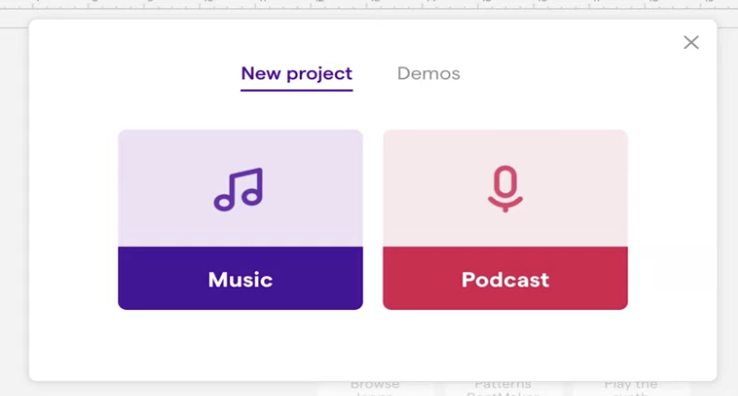
The first thing students will want to do is give their podcast a name.
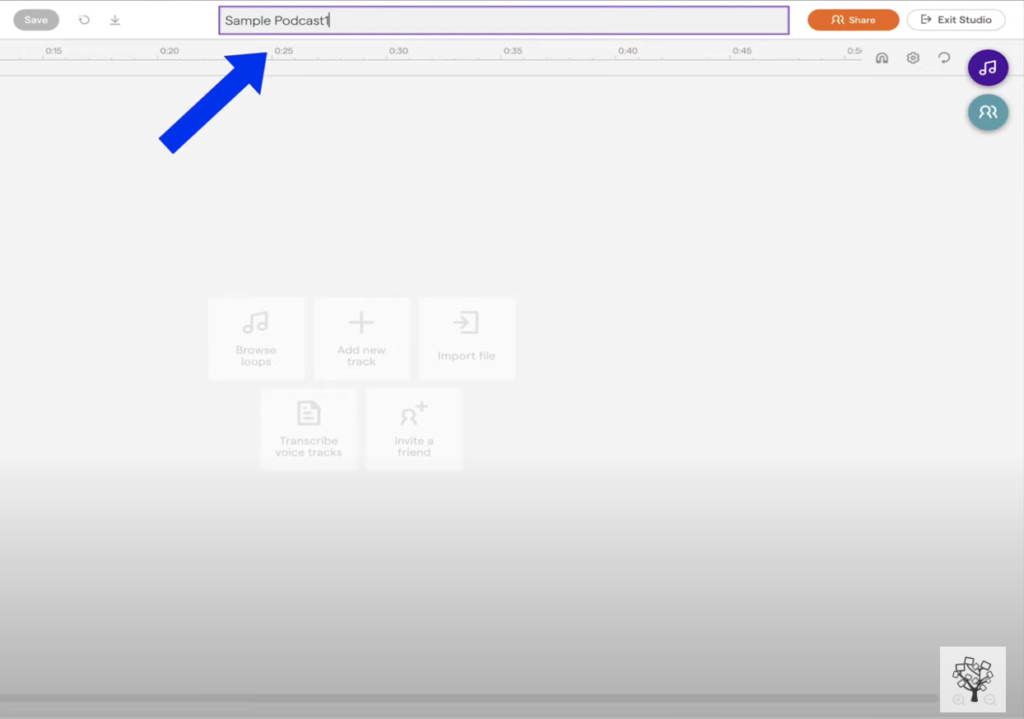
To record, students first click ‘Add New Track’ and then select ‘Voice and Microphones.’
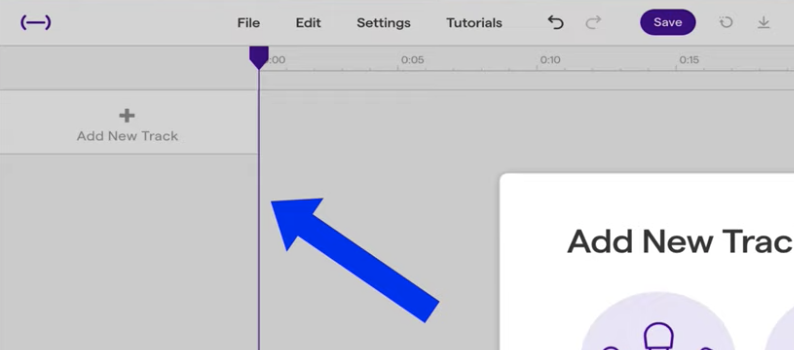

Next, you’ll want to have them do the volume check to make sure that the audio recording is being done correctly.
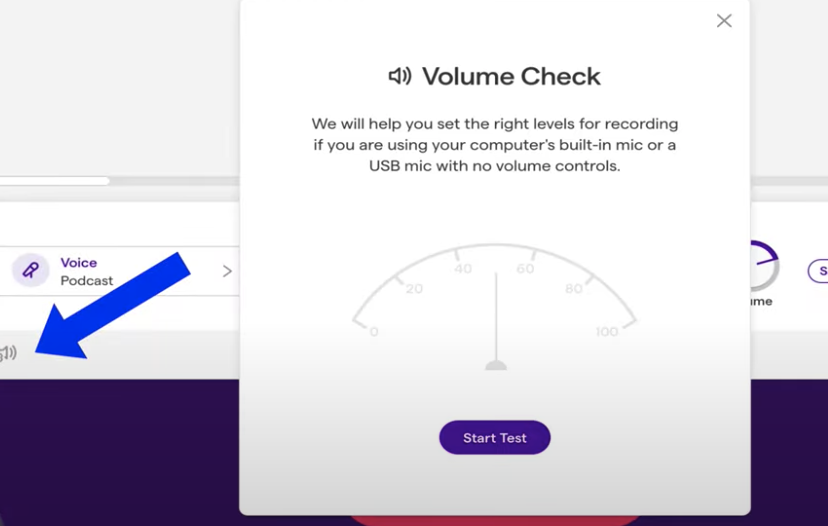
When students are ready to record, they simply click ‘Start Recording.’
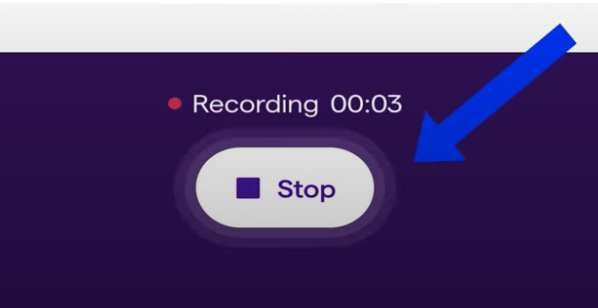
After the recording is finished, students will see their recordings show up as a layer in the studio.
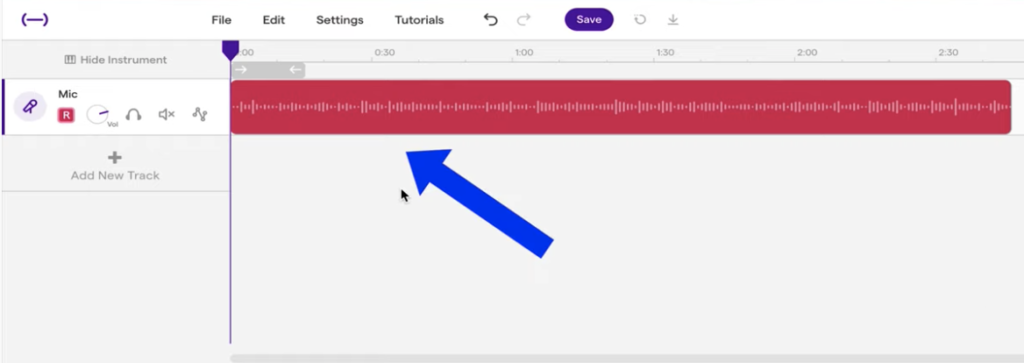
A unique, highly useful feature of Soundtrap is ‘Transcribe Voice Tracks,’ which will auto-populate a transcription of the entire audio file that was just recorded.
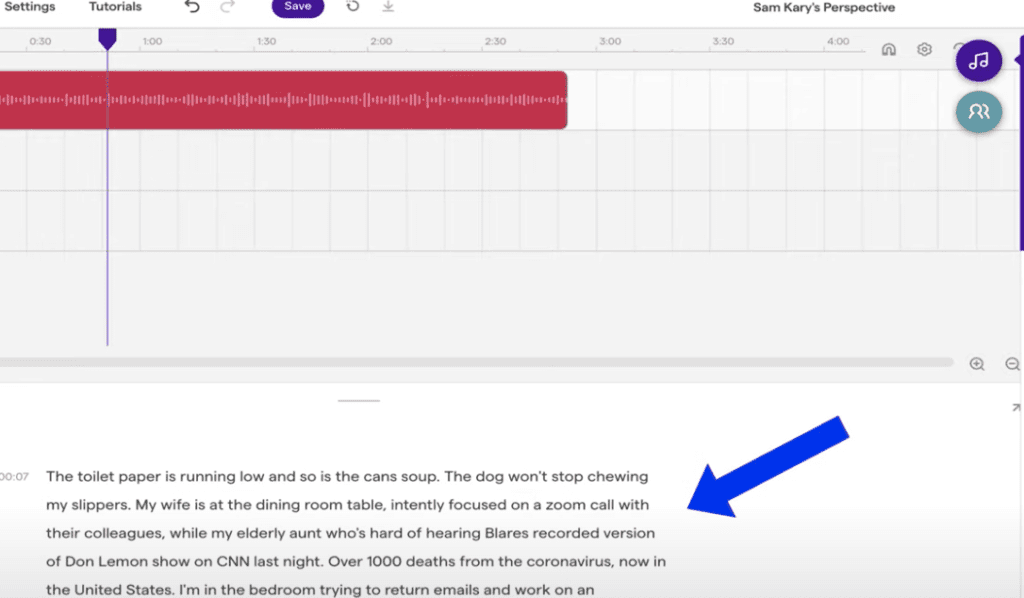
This is useful for show notes, but it’s even more dynamic than that.
The first thing students will want to do is edit the transcription for any errors. Soundtrap’s artificial intelligence will auto-transcribe, and it’s quite good, but of course it’s still going to have a few errors.
The way students fix an error is by dragging over the text, right clicking, selecting ‘Text Correction,’ and then fixing the text.

Students can also edit the audio using only the transcription. If there’s a section of their recording they want to get rid of, all they have to do is highlight that portion of the text, double click, and then select ‘Cut Audio.’
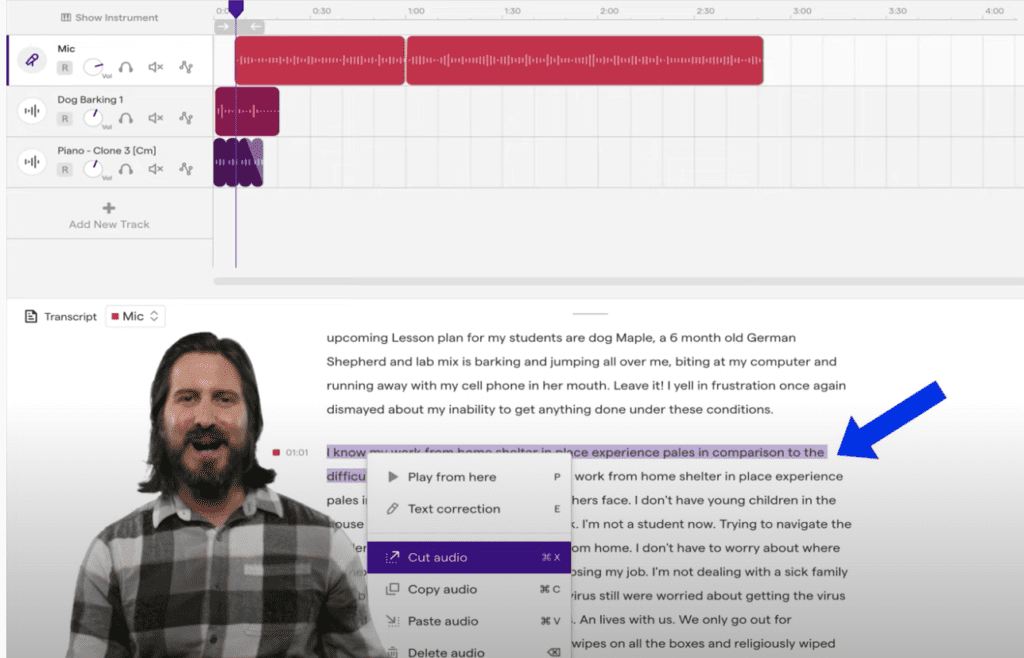
You’ll notice in the audio layer above that a segment of the layer has also been cut out, indicating that that section of the recording is now gone.
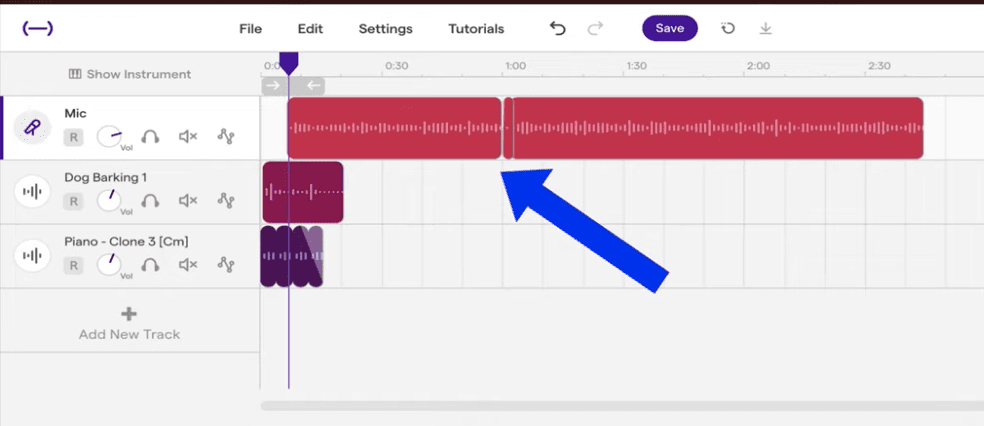
Next, students can add musical interludes to their podcast by clicking on the music icon on the top right and selecting a musical loop.
In addition to music, students can also search for different types of sounds.
To add musical loops and sounds to the studio, students just need to drag and drop them in.

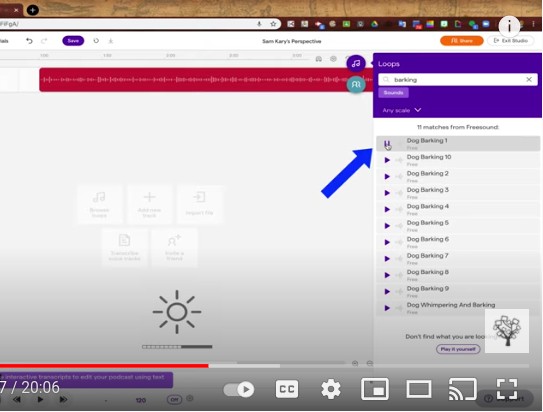
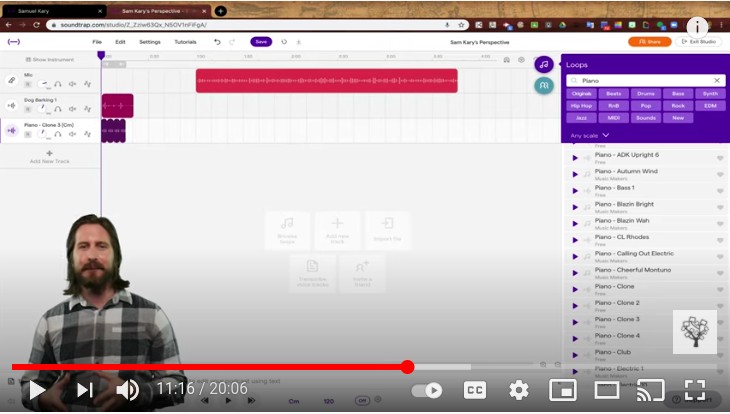
Then the audio and music layers can be dragged around within the studio so that the music comes right before the audio recording.
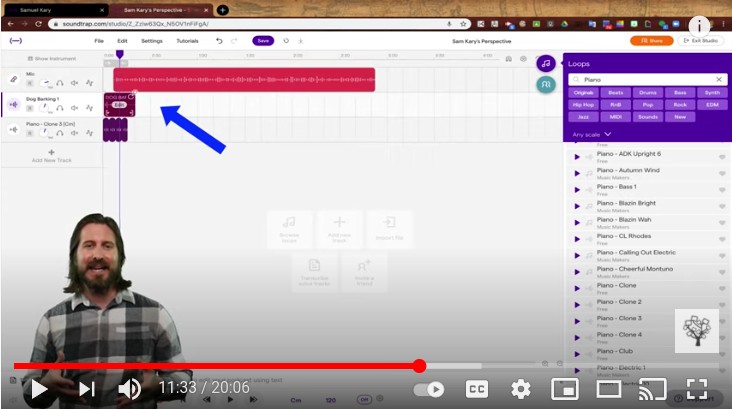
In order to duck the sound so that the sound fades away as my vocal track kicks in, all you need to do is drag the corner of the sound layer and that will fade the sound into the vocal track.
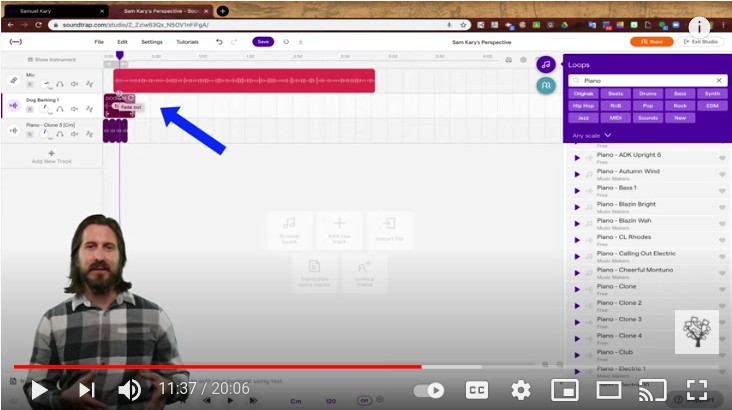
You’ll also notice here that the length of my final podcast is around two and a half minutes, which is really a perfect length for a short episode like this. You probably don’t want them to last any more than about five. When they’re ready to finish up, students will want to make sure that they have clicked the blue ‘Save’ button and then they can click ‘Exit’ to leave the studio.
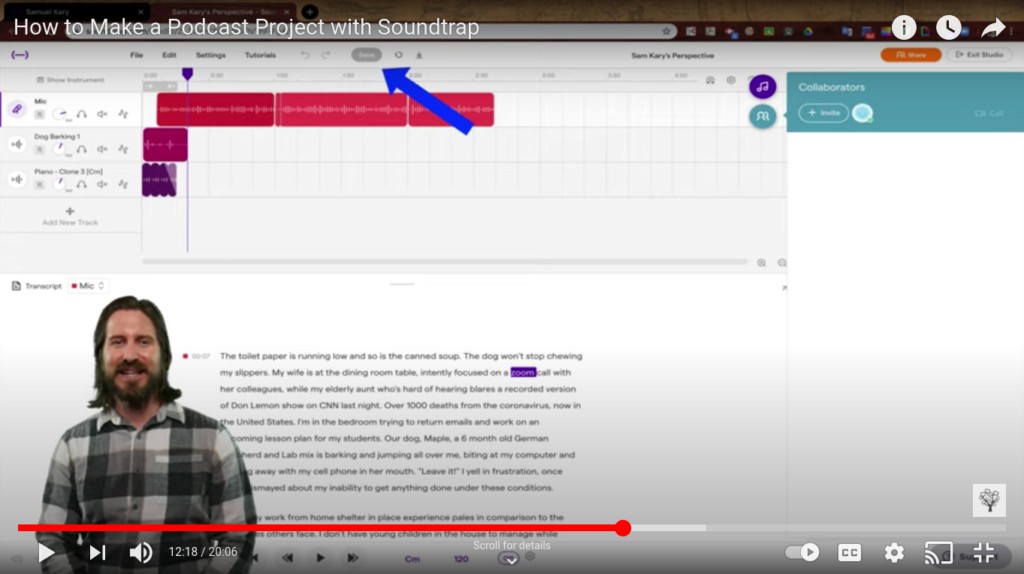
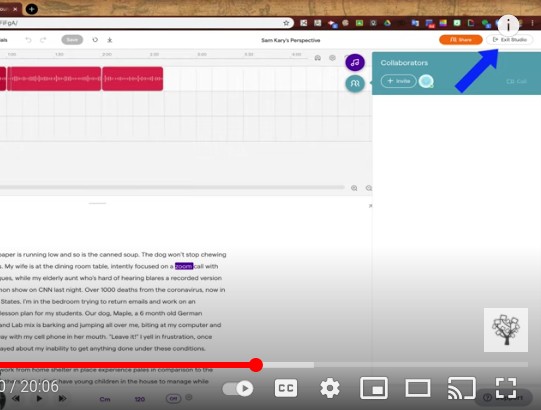
In order to download the file off of Soundtrap, all students will need to do is select the three dots, scroll down to ‘Download’, and select ‘mp3’.
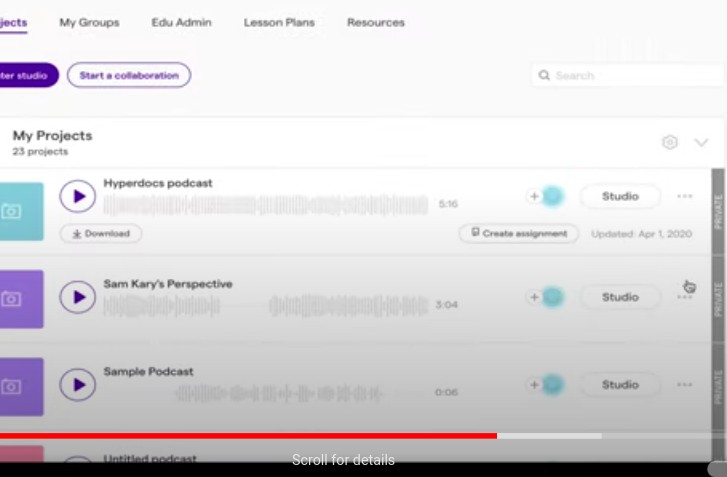
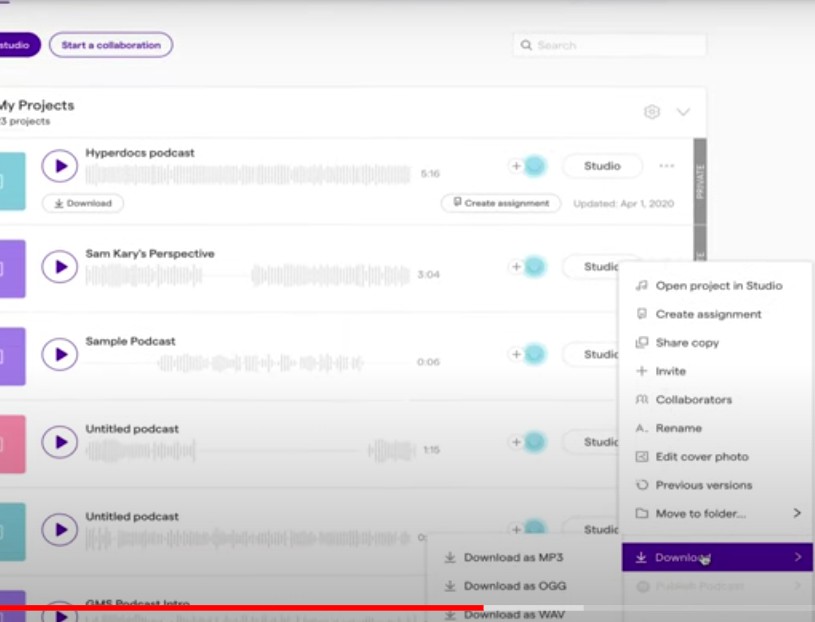
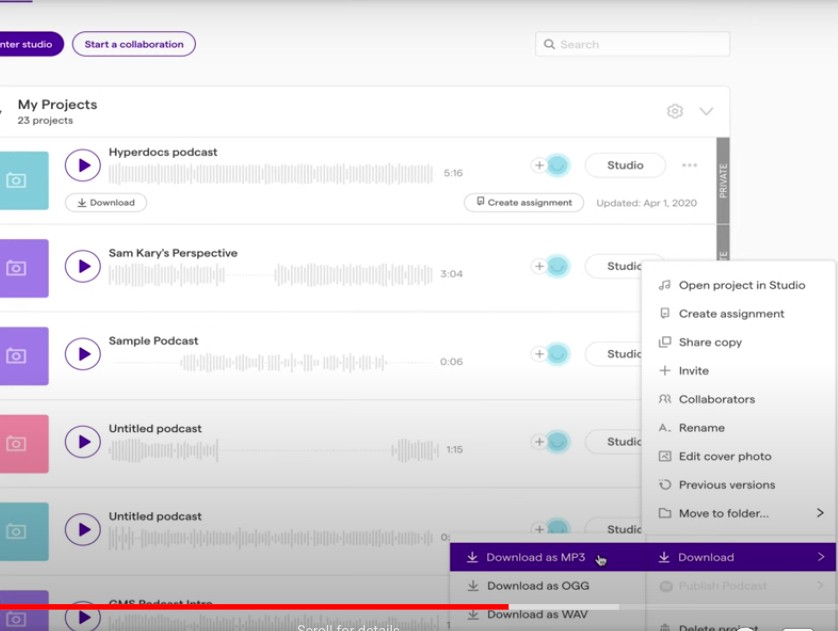
Conclusion & Resources
If you’re interested in checking out Soundtrap, enter my promo code: NewEdTechClassroom2021 here for an extended 90 day trial!
Click here to download the Podcasting Hyperdoc shown in video.
